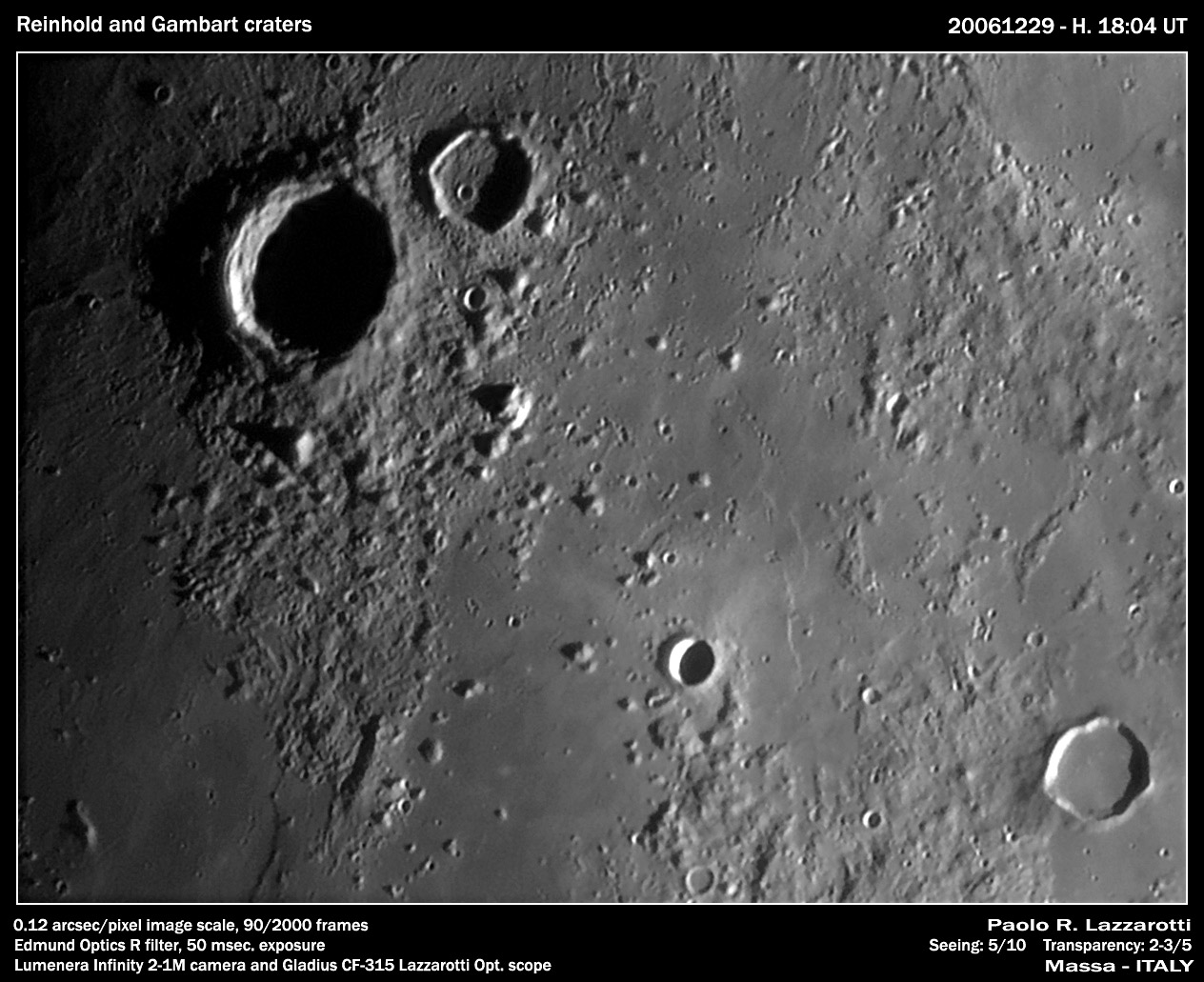
image by Paolo R. Lazzarotti, Massa, Italy
What are the major events in this area? The hilly terrain is the oldest material visible, being rock from the lunar crust that was ejected during the Imbrium Basin impact. On top of that, but not necessarily the next oldest are the lava flows of Mare Insularum that lap around the basin debris. The last large event, indicated by the squiggly lines of secondary craters especially at the top of the image, was the formation of the crater Copernicus about 1 billion years ago. Some of the small simple craters, such as Gambart A at the mid-bottom of the image, may be younger than Copernicus, but it impossible to say for sure. Many other features are intermediate in age - after the mare basalts but before Copernicus. At high Sun, Reinhold doesn’t have any rays or rim brightness and so is older than Copernicus (whose rays also cross it), but Paolo’s low Sun view nicely depicts alignments of ejecta from Reinhold on the mare, which must be older. Gambart (bottom right) is older than the mare because the lavas must cover its ejecta. Finally, there are three other very faint objects here which might not have been reported before. Just east and northeast of Reinhold B (just above Reinhold) are three 50-60 km long segments of linear rilles that angle towards the southeast. They are not visible on the Lunar Orbiter IV frame. Sometimes when I say that something hasn’t been seen before, I receive images that do show it - I hope that happens now for these are so faint that strong confrmation would be welcome.
Technical Details:
29 Dec 2006, 18:04 UT. Gladio 315 Lazzarotti telescope (f/25), Lumenera Infinity 2-1M camera, Edmund Optics R filter IR blocked, 90 frames stack out of 2000. I have enhanced the image to better show the faint rilles, Paolo’s original version is here.
Related Links:
Rükl plate 31
Paolo’s website
You can support LPOD when you buy ANY book from Amazon thru LPOD
COMMENTS?
Click on this icon File:PostIcon.jpg at the upper right to post a comment.



